Belgrade means “white city”; a place to discover. And there is much to discover in this beautiful Balkan city. Driving around the old town you can still see devasted buildings kept in memory of those who died during the last war. Old cars passing transport you back in time. Belgrade is uniquely beautiful and a very walkable city to discover its’ history and culture. Here are a few of our favorite sights:
Belgrade Fortress and Kalemegdan Citadel
Perched on a 125 meter high cliff, the ancient Kalemegdan Citadel has always sought to protect the city. The cliff-like ridge overlooks the Great War Island and the confluence of the Sava river into the Danube, and makes one of the most beautiful natural lookouts in Belgrade. Over the last 2300 years some 115 battles have been fought over this site, and parts of it and the outer city have been razed 44 times, as one conqueror removed another. What remains today dates from the 18th century. The core of the fortifications is the Upper Citadel, accessed by several massive gates and bridges (now wooden) over deep moats.
The main entrance is the Stambol Gate, built by the Turks around 1750, which leads to the Military Museum. Stop just inside to get an audio guide and map of the extensive fortress and Kalemegdan park. The audio guide is available in six languages: English, French, German, Spanish, Russian and of course Serbian. It includes information on 39 spots, while the total length of the recording is almost 90 minutes.
Between the outer and inner walls is an impressive collection of tanks, cannons, guns, and other military vehicles. Some of the cannons had barrels so large I could have comfortably fit inside (and Tim tried several times to convince me to test this theory out)! The fortress cannon is one of the largest of its kind and dates back from the late-18th or early-19th century.
The twin towers of the Barbican of the Prison’s Gate are quite foreboding and look ready for battle, rightfully so! After the first vain Turkish siege of 1440, the Hungarians built a barbican in front of the Despot’s gate in order to better protect the main approach to the town from that direction. The barbican is known today under its later Turkish name “Zindan Gate” (zindan=prison), named because the Turks used the two strong semicircular towers as disreputable prisons.
The Victor Statue is the symbol of Belgrade. It was erected on 1928 to commemorate the Kingdom of Serbia’s war victories over Ottoman Empire (First Balkan War) and Austria-Hungary (World War I). It is one of the most famous works of Ivan Meštrović.
Aside from the fortress itself, Kalemegdan park is a wonderful place to stroll with its various fountains, statues, ruins, and views over the Sava and Danube rivers. A variety of homemade craftwork can be found at vendors throughout the park, such as lace and knitted woolens.
Good Hope Garden
Also part of Kalemegdan park, the Good Hope Garden covers an area of 6 hectares and has 2000 animals of 200 species. I particularly love zoos and rarely pass one up; Belgrade Zoo was one of the best we have been to in Europe. On our visit, there were a number of white lion cubs that had recently been born and we were able to interact with up close. Only a fence separated us from the cubs, who were quite playful. Like most cats, they were curious and came right up to the fence to investigate and play. We literally could have spent all day playing with the cubs! Tim joked, “What did you do in Serbia? Oh, we spent the entire time at the zoo playing with lion cubs!”
Some of our other favorites at the zoo were the kangaroos, hippos, and miniature ponies who love being feed leaves.
Republic Square
Republic Square is a gathering place for Serbians with several cafes lining the space. The National Museum is located here as well as the National Theater. The bronze statue of Prince Michael on a horse, by the Italian sculptor Enrico Pazzi was erected in 1882, and stands tall in Republic Square. It was erected in honor of the Prince’s most important political achievement, complete expulsion of the Turks from Serbia and liberation of the remaining 7 cities within (then) Serbian territory, still under the Turkish rule (1867). The names of the cities are carved on a plates on the monument itself, on the statue’s pedestal and Prince is sculptured with his hand allegedly pointing to Constantinople, showing the Turks to leave.
Skadarlija
Skadarlija is the old Bohemian Quarter of Belgrade and dates back to late 19th and early 20th century. It was back then when its kafane (taverns and restaurants) were a meeting place for many of the greatest figures of the cultural scene of the period. It is often compared with the Montmartre in Paris, both for its appearance and the cheerful, vigorous artists’ atmosphere. The area is home to some of Belgrade’s best restaurants, offering the traditional national cuisine, most notably the roštilj (grilled meat) with pivo (beer). Every restaurant has live musicians playing traditional songs. The musicians travel from table to table and the guests often sing along.
Serbian cuisine is very rich with heavy creams and cheeses. The stuffed peppers were a particular favorite of ours, which we enjoyed with each of our meals. I recommend a nighttime stroll around Kalemegdan park to walk off a bit of your meal!
Knez Mihailova Street
Knez Mihailova Street is the main pedestrian and shopping area of Belgrade. Until 1950s, most of the Knez Mihailova Street belonged to a couple of very rich Belgrade families. However, during communist rule those family buildings were taken away by the state. The area is now protected by law as one of the oldest and most valuable monumental complexes of the city, with a large number of representative buildings and urban houses built at the end of 1870s. Although its original look didn’t changed, the purpose of the buildings certainly did. Instead of residential buildings, you will find branded stores, cultural centers, bookstores, restaurants and cafes.
We recommend staying at the Beograd Art Hotel, perfectly located on Knez Mihailova Street. The hotel has a wonderful breakfast and a nice cafe to relax for a bit after indulging in some shopping.
National Assembly
The National Assembly of Serbia is located in the city center, in front of Pioneer’s Park, on the Nikola Pašić Square. It was built in the Classical style with Renaissance elements and is one of the most important achievements of recent Serbian architecture.
Temple of Saint Sava
The Orthodox temple is dedicated to St. Sava, founder of the Serbian church and an important figure in medieval Serbia. The temple has been built on the Vračar plateau, on the location where, in 1595, St. Sava’s remains are thought to have been burned by Turkish Sinan Pasha. From its location, the temple dominates Belgrade’s skyline. The façade of the temple is done in white marble and granite. The inner decoration is currently being worked on and will consist of mosaics.
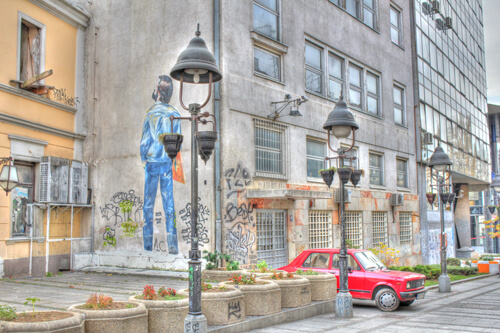
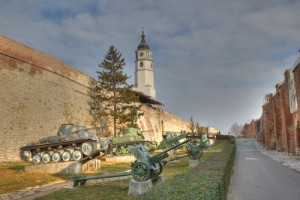
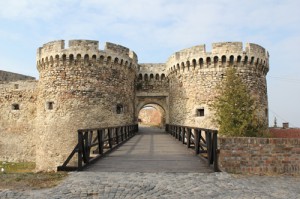
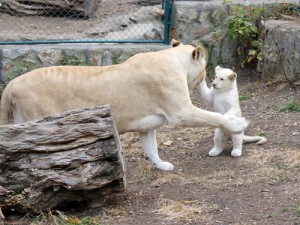
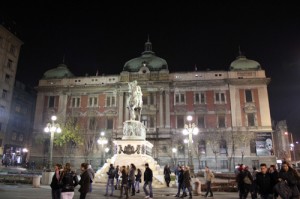
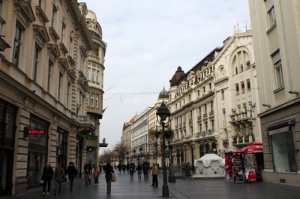
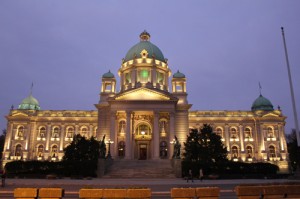
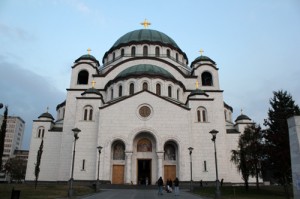
Jeffrey Smith says
Thank you for the info, and your website honestly looks tremendous. What word press theme are you utilizing?
Jennifer Dombrowski says
Thank you, Jeffrey! I use the Graphene theme.
predrag says
Thank you for this amazing article about my city. Im really glad that you have spent some great time here! 😉
All the best from Belgrade, Serbia!
Jennifer Dombrowski says
We really did enjoy Belgrade! Lovely city!
Steve Yeoh says
Thanks for your detailed insight into Beograd! I only had a few sights on my list of things to do before this!